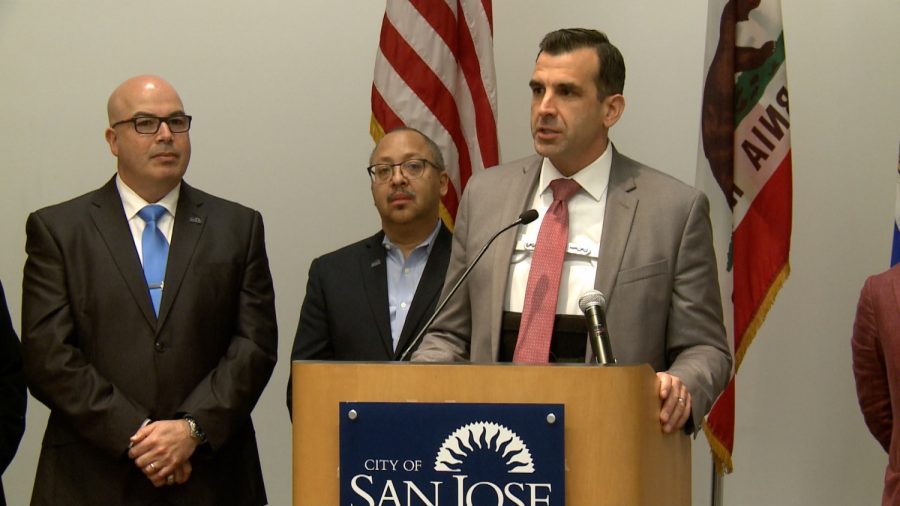San Jose Mayor Sam Liccardo announced on Tuesday, Feb. 12 that the Digital Inclusion Fund (DIF) will close the digital divide by providing thousands of people with Internet access.
The city council approved the fund in a unanimous vote on Feb. 12.
“We expect with this fund, we’ll be able to connect 50,000 households in the city of San Jose, ensuring that they have the high-speed internet connectivity, the devices, and the skills they need to be able to engage meaningfully in this sizzling economy,” said Liccardo.
According to data from 2013, about 36,000 San Jose households were without Internet. Liccardo said that currently, about 95,000 San Jose residents lack access.
The new investment will go towards providing low-cost internet plans, refurbished devices to low-income families, and ensuring that the young and old have the necessary skills to understand the digital world.
“The gap between the rich and poor is widening in our valley and in our country,” Liccardo said. “And we know that the heart of that gap is the difference in skills, opportunities that many of our children have or lack.
“So this is an effort to see how we can lift the opportunity for many of our children to get them the digital skills they need in coding, computer science, and the devices and connection they need to high-speed internet to be able to succeed in the future.”
The seed funding for this plan comes from Verizon and AT&T, and government and private grants.
The city partnered with California Emerging Technology Fund (CETF) to help manage the fund. It is a non-profit organization whose mission is to close the digital divide by hastening high-speed internet availability to communities and populations that need it. CETF has been established for over a decade.
“We’re going to help enable that. We have a lot of lessons learned, a lot of experiences to share. We know how to manage very efficiently a lot of funds so everything gets to the community,” said Sunne McPeak, president and CEO of CETF.
In a span of 10 years, the DIF plans to allocate $10 million toward community grants. A total estimate of $24 million will go towards grants for digital inclusion programs.
The fund is partnering with telecommunications companies Verizon and AT&T to deploy 5G technology, with speeds of at least 25 Mbps upload and 3 Mbps download.
“The fund will also pay for a full-time coordinator here in San Jose that is part of the CETF team. We’re not getting any money from the fund directly except for upfront, $20,000, to compensate for our staff time to help set everything up,” McPeak said.
How Will It Work?
For the first nine months, the grant will go towards planning with the community. The first three months of funding will be spent on community consultations, the second three months on organizing with the advisory board, and the last three months on processing grant applications.
The fund is also aimed at addressing its goals through a range of targeted programs that they have called Access, Device, Awareness Campaigns, Building Digital Literacy Skills, and Innovation Pilots.
The Access program would provide connectivity to libraries and a program to expand San Jose’s elementary and middle school development. This way, students will not have to sit in unsafe spaces just to do their homework.
“It would make a huge difference for families that can’t afford computers at all, and have their children to go libraries, stay up late, and go to Starbucks … so that they could use their computers,” Linda Mimila, a senior at Lincoln High School, said.
“This connection will help me by pursuing computer science classes in my college that I will be attending to. And I feel like having these classes will make a huge impact in your life because technology is now evolving and we don’t want to get left behind.
“I think it’s a huge impact for this fund to be launched,” she said.
The Device program would allow families who cannot afford devices to check-out a device from a place like a library or purchase a refurbished one from a donation center.
The fund will ensure that San Jose residents have the opportunity to stay up-to-date with the digital world, with programs that include coding, technical support, and health care education. It will make sure that residents know that these programs are available to them through awareness campaigns.
The fund said it is also open to further innovation to balance community priorities.


